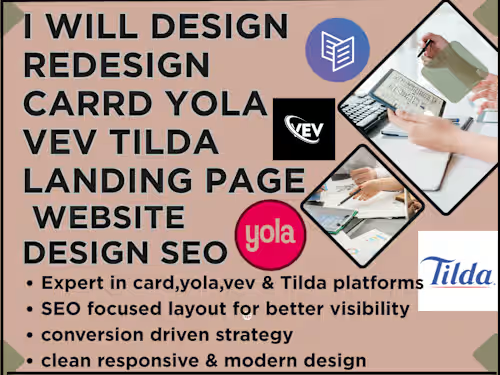
I will build create design Tilda yola vev carrd website design
Starting at
$
80
About this service
Summary
FAQs
Which platform is best for my website—Tilda, Yola, Vev, or Carrd?
A: The best platform depends on your needs. Tilda is great for visually rich, block-based websites with good design flexibility. Yola is user-friendly for small business sites. Vev excels in creating interactive, animated designs. Carrd is ideal for simple landing pages or personal profiles. Consider your project complexity, design requirements, and budget.
Q2: Do I need coding experience to build a website with these platforms?
A: No, these platforms are designed for non-technical users with drag-and-drop interfaces. However, some advanced customization (like adding custom scripts or CSS) may require basic coding knowledge.
Q3: Can I integrate e-commerce features into my website?
A: Yes, platforms like Tilda and Vev support e-commerce integrations, allowing you to sell products or services directly through your site. Check each platform's capabilities for specific features.
What's included
Design & Prototyping Tools
Figma / Adobe XD / Sketch
Website Builders & Platforms
Tilda Yola Vev Carrd
Duration
5 days
Skills and tools
Graphic Designer
Project Manager
Web Designer

Carrd

Google Ads

Google Analytics

Home Design 3D
Tilda
